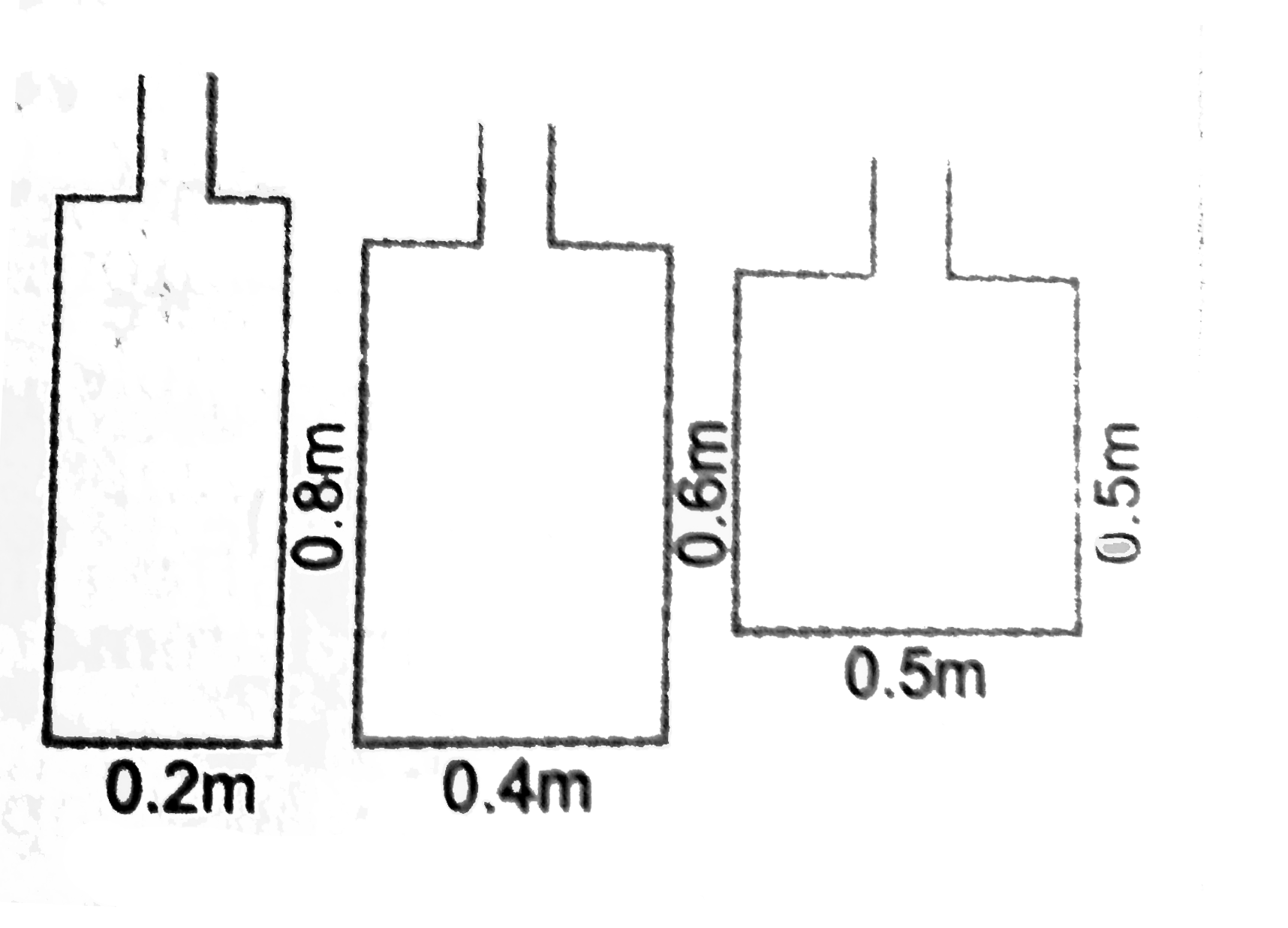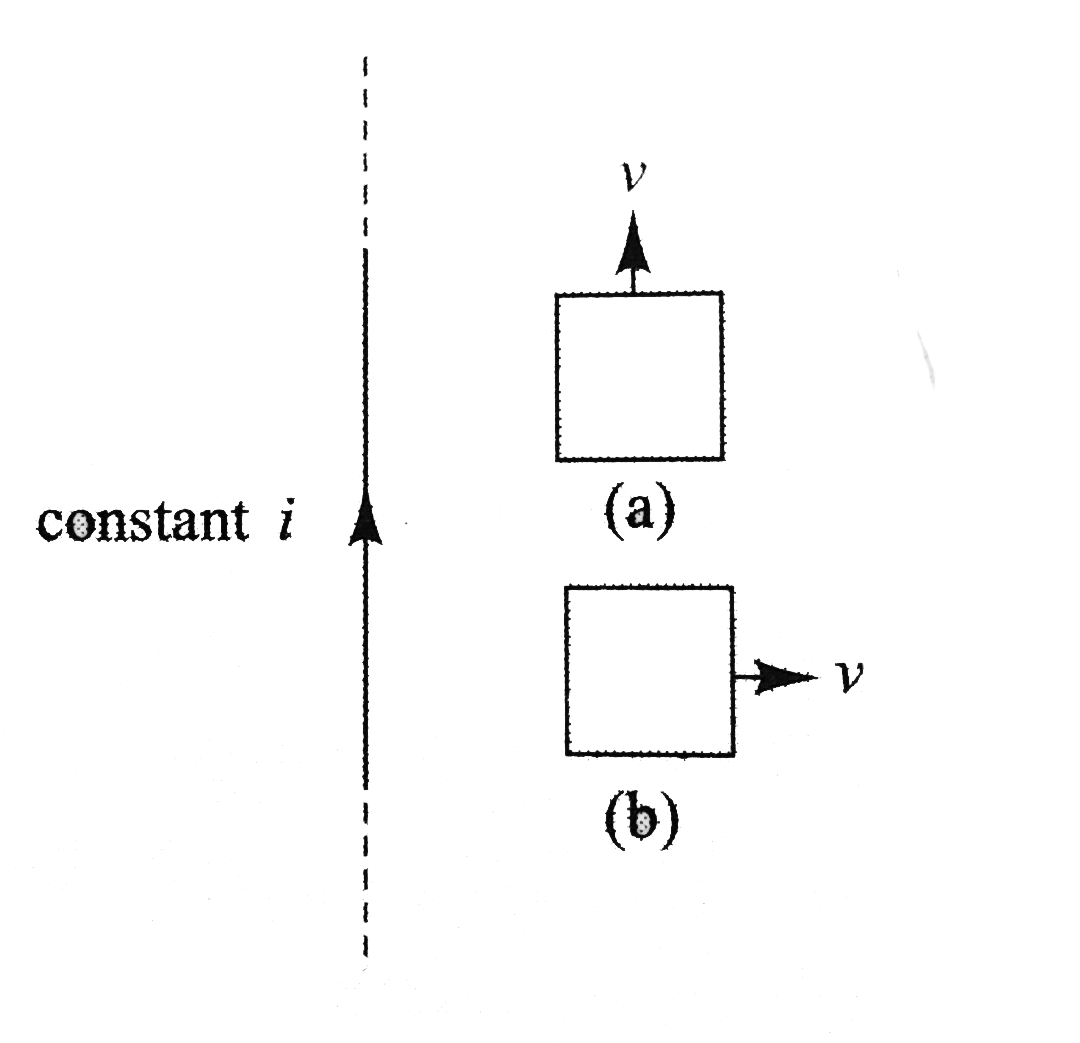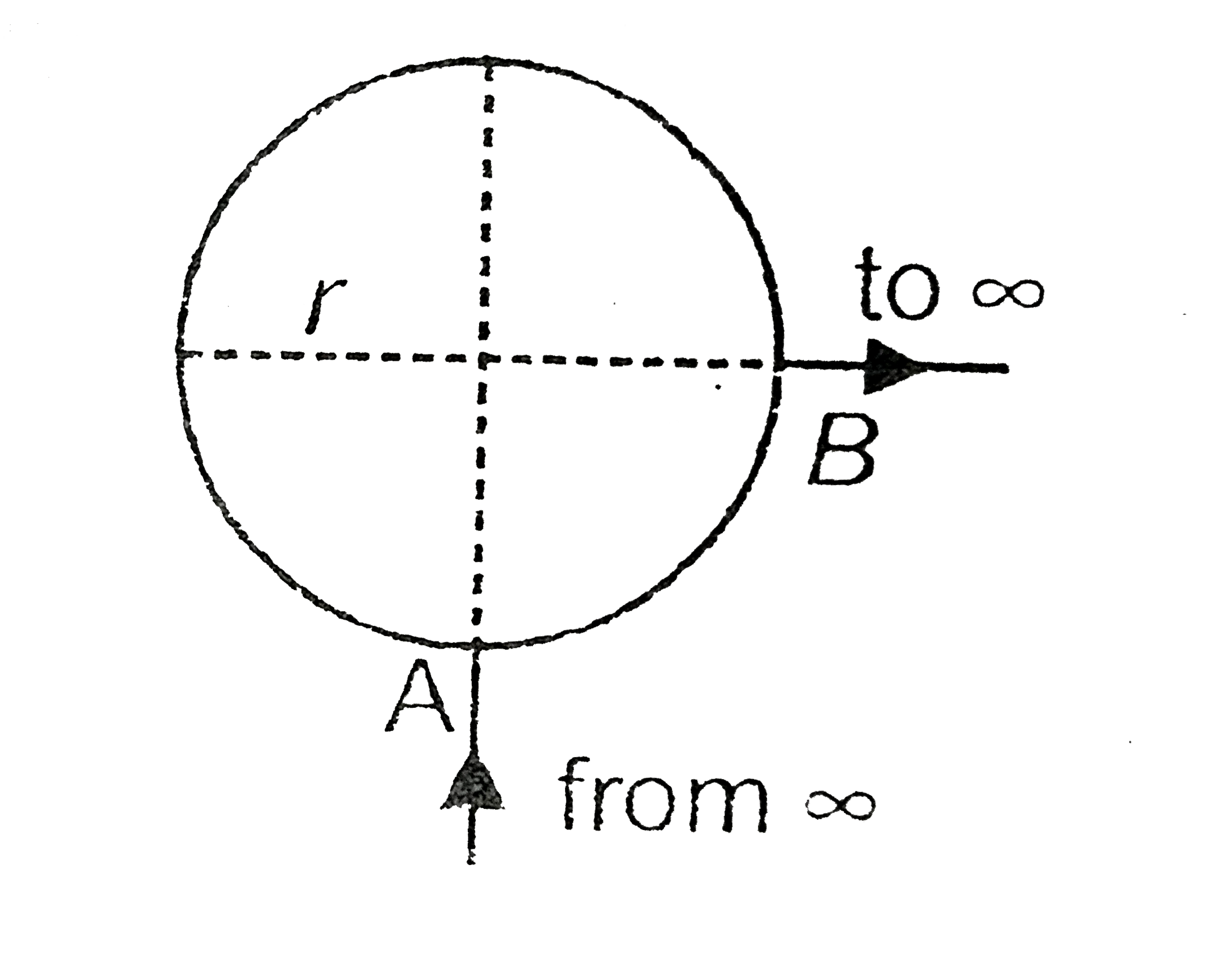Three wires each of length 2⋅0m are bent into different rectangular loops and then suspended in a magnetic field, figure. If the current in each of them be the same, which loop shall be acted upon by largest torque? If any of the wires be bent into circular loop, then?

Torque (τ) on a current loop suspended in a uniform magnetic field is given by τ=IABsinα, i.e., τ∝A. Since the area of loop (c)=0⋅5m×0⋅5m is maximum, hence the largest torque will be acting on loop (c). When any wire is bent into a circular loop, the torque will be even more because for a given perimeter the area of the circle is maximum.
Topper's Solved these Questions
- MAGNETIC EFFECT OF CURRENT AND MAGNETISMBOOK - PRADEEPCHAPTER - MAGNETIC EFFECT OF CURRENT AND MAGNETISMEXERCISE - Conceptual Problems (d)
2 Videos
- MAGNETIC EFFECT OF CURRENT AND MAGNETISMBOOK - PRADEEPCHAPTER - MAGNETIC EFFECT OF CURRENT AND MAGNETISMEXERCISE - Very Short Answer Questions (a)
2 Videos
- ELECTROSTATICSBOOK - PRADEEPCHAPTER - ELECTROSTATICSEXERCISE - ASSERTION-REASON TYPE QUESTIONS
2 Videos
- OPTICSBOOK - PRADEEPCHAPTER - OPTICSEXERCISE - Multiple choice questions
1 Videos
Similar Questions
A rectangular loop carrying a current i is placed in a uniform magnetic field B. The area enclosed by the loop is A. If there are n turns in the loop, the torque acting on the loop is given by
View SolutionShows a long current carrying wire and two rectangular loops moving with of velocity v. Find the direction of current in each loop.

View Solution
Knowledge Check
Four wires each of length 2.0 metres are bent into four loops P,Q,R and S and then suspended into uniform magnetic field. Same current is passed in each loop. Which statement is correct?
 ACouple on loop P will be the highestBCouple on loop Q will be the highestCCouple on loop R will be the highestDCouple on loop S will be the highest
ACouple on loop P will be the highestBCouple on loop Q will be the highestCCouple on loop R will be the highestDCouple on loop S will be the highestFour wires each of length 2.0 meters area bent into four loops P,Q,R and S and then suspended into uniform magnetic field. Same current is passed in each loop. Which statement is correct?
 ACouple on loop P will be the highestBCouple on loop Q will be the highestCCouple on loop R will be the highestDCouple on loop S will be the highest
ACouple on loop P will be the highestBCouple on loop Q will be the highestCCouple on loop R will be the highestDCouple on loop S will be the highestA wire of length l is formed into a circular loop of one turn only and is suspended in a magnetic field B. When a current i is passed through the loop, the maximum torque experienced by it is
A(14π)BilB(14π)l2iBC(14π)B2ilD(14π)Bi2l
Two identical wires each of length L are bent to form a circular loop and a square loop. If the same current i flows in the two wires, then the ratio of the magnetic inductions at the centre of the circular and square loops is :
View SolutionIn the figure, the current l enters the circular loop of uniform wire of radius r at A and leaves it at B. The magnetic field of the centre of circular loop is

View SolutionA wire of length L is bent to form a circular loop of number of turns n. The coil is placed in a magnetic field of induction B and a current is passed through the coil. What will be the maximum torque acting on the coil?
View SolutionWhen a current carrying wire is bent into a circular loop, magnetic field lines around it
View SolutionA rectangular loop of metallic wire is of length a and breadth b and carries a current i. The magnetic field at the centre of the loop is
View Solution
